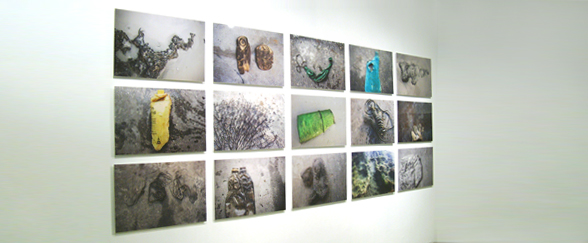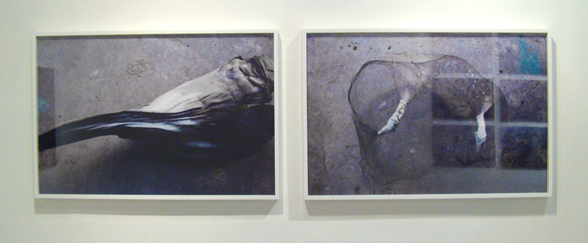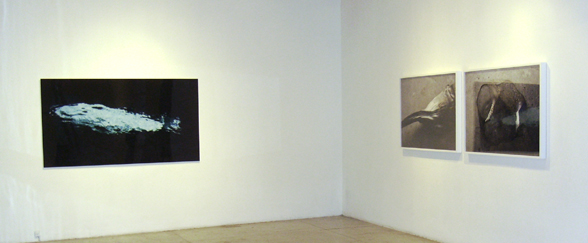"Blind Impress", The Museum of Israeli Art, Ramat Gan
Ruth Netzer, Journey to the Self, Paradoxes
Our relationship with the past is never free of emotional and moral loads. As artists, moreover, we tiptoe through a field charged with personal and public values as we address the memories that bridge and connect them. The Israeli submarine Dakar, that went down with its crew in 1968, was finally located, with considerable effort, in 1999. Yudith Schreiber’s brother, Sergeant First Class Amnon Ron (Ringwald), was a member of its crew.
In one of our conversations, Yudith remarked: “Were I able to do so, I would board a helicopter and photograph the nurturing sea from above at the submarine’s resting place … knowing that they are down there, below … This is one photograph that is not part of the exhibit.
We want to know things before they happen, to predict, to anticipate events in advance. We would like to be reassured that we will always be capable of exposing and revealing links and plots before they explode, to stay one step ahead. But photography is the after time –post mortem, if you will.
Yudith Schreiber’s photographic works include numerous washed objects placed on a concrete surface. Water is present in her works as material bearing many‑branched associations and contexts, as a changing and permanent element, in a constant cycle of dampness – evaporation – dryness, as a mediating means that may soften the encounter between hard surface and object, between physical material and watery, dissolving moisture.
The concrete surfaces do not function as backgrounds alone but rather become amorphous maps that challenge the site’s obvious coordinates. The objects placed on them, in turn, may reflect a false sense of order, derived from the ostensibly serial nature of the act of placement.
The objects that became unwanted and crushed, eaten away by corrosion and violence, are not part of an index or catalogue of junk. That is not the kind of photography that interests Yudith. The overhead view and placement designate options other than footstep following, tracking, testimony and remnant examination. This perspective affects the sea and sand photographs and may engender vagueness regarding distance and proportion ratios.
The absence of hierarchy negates any implication of imposed narrative, such as formal/typological language or systematic examination of “findings.” The presence of objects without self-importance is empowered precisely because they have lost their function in the universe. The multiplicity of objects, the extended search for them and the act of their having been photographed may indeed also constitute an impassioned search for something, a secret or code, an enigma of survival and revitalization. At the same time, however, the exhibit as a whole is not an elegy to passing time or a venture attempting to impart presence through photography. Rather, these works center about an axis of present action, a virtually tautologous axis that is repeated in the act of gathering, in the encounter with the rockbound coast and the art of photography itself. Yudith does not return reflectively to “the scene of the crime” but rather creates a new text for herself something ostensibly accumulated but also evanescent at the same time. Each photograph offers both part and whole, but the puzzle is never complete.
One light object in black water, a diving fish, an underwater monster or messenger … The sea bears personal, essential significance in Yudith’s works. Her photographs conduct a deep spiritual and emotional discourse with vast bodies of water. Her photographs run the gamut from attenuation and destruction to beauty, as pressure flattens the material and impresses its portrait thereupon.
Gilad Ophir curator



